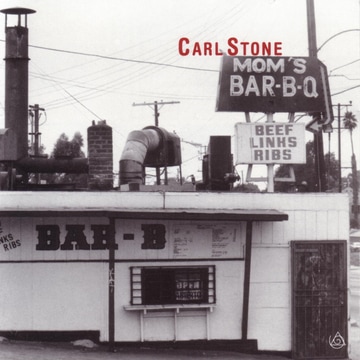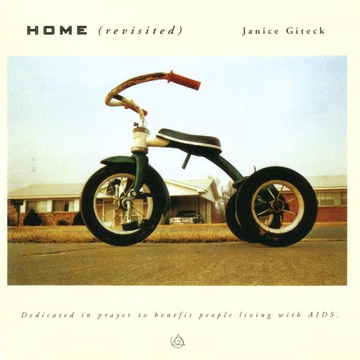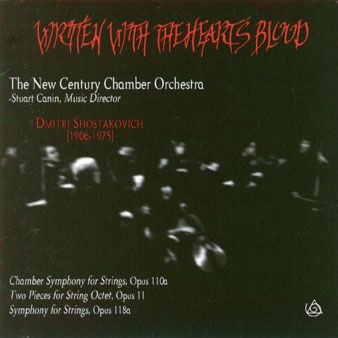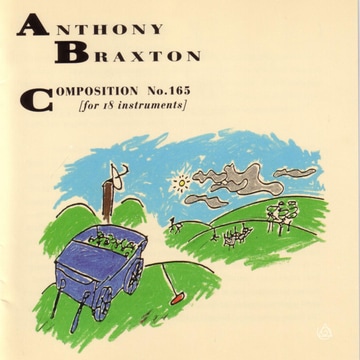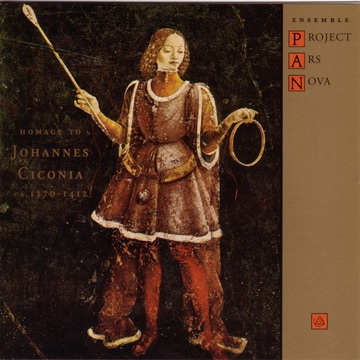|
Mom’s
for Macintosh computer It's as if he became so enamored of the beauty of the sample that he just had to take it apart, to discover what it was that made it so great, all the while creating something else equally lovely. --L.A. Weekly There is nothing commonplace about the sophisticated sampling practiced by Carl Stone, who has been in the musical transformation business ever since graduating from CalArts in the '70s. For Stone, who says he is fascinated by everything from Japanese Enka to Motown to Mozart, sampling provides a way to encompass all his musical interests. Sampling that which is carved in Stone is like voyaging microscopically deep inside sound. "Sometimes," Stone says, "I'm simply attracted to a kind of wonderful moment in an otherwise dreary piece. So I'll say to myself, 'What would it be like to go in and really examine this closely and see how it works and see what can result from turning it inside out?' "It is my hope," he continues, "to make music that makes you wonder, so it's interesting for me to start with something that's not so wonderful, a musical cliche, and then put it through the paces so it becomes something I enjoy." Stone's slowly unraveling, unpredictable musical process creates truly delightful music. --Wired Available here: iTunes HOME (Revisited)
New Performance Group; Gamelan Pacifica; Philandros of the Seattle Men's Chorus; Mimi Dye, viola; Thomasa Eckert, soprano For a postminimalist, Giteck traverses a wonderful range within each piece, surging from darkness into light, from sorrow into sexuality, from stasis into dance. --Village Voice "Om Shanti" was composed in 1986 and is dedicated to People Living With AIDS. It is the first of the four works on this album which I call collectively 'my music and healing series'. "Om Shanti" was commissioned for the New Performance Group by the Institute for Transformational Movement in Seattle, shortly after the loss of the Institute director, Peter Guiler, who died of AIDS. "Om Shanti" has also been heard on two Artists Against AIDS benefit concerts in Seattle. The text for the first movement is by Shankaracharaya and is sung in Sanskrit. I am without thought, without form. I am all-pervasive, I am everywhere, yet I am beyond all senses. I am neither detachment nor salvation nor anything that could be measured. I am consciousness and bliss. I am Shiva! I am Shiva! Om is the primordial human expression for all sounds in the universe according to yogic traditions; Shanti is peace. This is my prayer for people living with the AIDS virus. --Janice Giteck Available here: iTunes HDtracks Written With the Heart’s Blood
New Century Chamber Orchestra featuring Stuart Canin performs Chamber Symphony for Strings Opus 110a, Two Pieces for String Octet Opus 11, Symphony for Strings Opus 118a. Best Small Ensemble Performance. --Grammy nomination 1997 The poet Carl Sandburg once said that Shostakovich's music is music "written with the heart's blood", and it was this feeling that enabled my colleagues and me in the New Century Chamber Orchestra to maintain the passionate energy needed to record these magnificent works. The power of Shostakovich's music is evidenced by the fact that its composer used it as a weapon in the fight against Hitler: witness the 7th [Leningrad] Symphony, written in 1942, which became the worldwide symbol of resistance against Nazism. The dedication of the Eighth String Quartet "to the memory of the victims of fascism and war" was a constant reminder to us musicians of how visceral Shostakovich's music is; and yet the recurring motifs of hope and renewal show that Shostakovich was ever a human being, always hopeful of an end to dark times. --Stuart Canin, Music Director Chamber Symphony for Strings, Opus 110a arranged from Quartet No. 8 by Rudolf Barshai Shostakovich composed his Quartet No. 8 in the astonishingly short period of three days in July 1960 at Dresden, where he was working on the music for a war film about the destruction of that city called "Five Days - Five Nights". The feelings aroused at that time catapulted Shostakovich to create an "autobiographical" work in five continuous movements in which the composer was replaying the significant events of his life. Two Pieces for String Octet, Opus 11 The Prelude was composed in Leningrad in 1924 and the Scherzo followed in 1925. He drafted also a fugue as part of this opus but decided never to publish it. The first performance of his Opus 11 took place at the Mozart Concert Hall in Moscow (now called the Stanislavsky and Nemirovich-Danchenko Musical Theater) on January 9, 1927. What most biographers ignore or omit is that Shostakovich's octet pieces were written concurrently with his First Symphony, and although composed for a small group of strings, were Shostakovich's experiment in creating an overwhelming "symphonic" texture with few musical resources. His mood at that time was demonic, pessimistic and tumultuous. Symphony for Strings, Opus 118a arranged from Quartet No. 10 by Rudolf Barshai Shostakovich composed his Tenth Quartet during a very busy summer in 1964. The year began with an enormous tribute to the composer when the Modern Music Festival in Gorky was devoted entirely to Shostakovich's music. This event brought international attention to the composer and his music. He traveled from Gorky to Leningrad to oversee the Lenfilm Studios production of Hamlet. Then for the next three months he traveled to Moscow, Central Asia, and then back to Moscow and Leningrad. He was at his dacha at Zhukovka in early May when he began composing his Tenth Quartet, dedicated to his third wife, Irina. By August the quartet was completed. The work was premiered on November 20 by the Beethoven Quartet at the Moscow Conservatory. Available here: iTunes Composition No. 165 [for 18 instruments]
performed by the University of Illinois Creative Music Orchestra, conducted by Anthony Braxton There are static and mutable cloud formations that drift in and out of the canvas of the music. POOOOOOOOOOOOOOOOOOOW! "Hey, even I recognized that cloud! (chord!)" said Johnathon. "Don't rush it," cried Ben, "it'll come in its own time. In Composition No. 165, moments float in and out of the sound space -- yet there are target recognition states. This is a sequential event continuum that places equal emphasis on sound and space -- the moments come ... the moments go." --Anthony Braxton Available here: Groove HDtracks Homage to Johannes Ciconia (ca. 1370-1412)
madrigals, motets, virelais, ballata and canons: secular music for voices with corno muto, harp, vielle and lute The musicians of Project Ars Nova really know how to perform the music, presenting it in a way that shows they have it in their blood, communicating their sense of excitement in what was and remains some of the most thrilling music written around 1400. --Gramaphome In 1950, Willi Apel published a remarkable collection entitled "French Secular Music of the Late Fourteenth Century", containing music that had previously been virtually unknown, not only to the general public but to most music historians as well. At a time when twentieth century music was undergoing a veritable explosion in both tonal and rhythmic complexity, it came as a stunning surprise for many to find pieces written around 1400 that were rhythmically as wild as anything that was being written in 1950. Taking a prominent place in Apel's collection were works by Matteo de Perugia (d. 1418), a musician of Pope Alexander V; with some fourteen pieces, Matteo was the most widely represented composer in the anthology. Shortly after Apel's publication Heinrich Besseler, one of Germany's most eminent historians, launched a polemic against what he perceived to be a distortion of our perspective of the music at the end of the fourteenth centuy, a distortion caused by our own fascination with 'rhythmic complexity.' In a essay entitled "Hat Matheus de Perusio Epoche gemacht?" he argued that the truly epochal figure was not Matteo da Perugia, but the more obscure Johannes Ciconia. Besseler's argument was twofold: First, although we have a large amount of music by Matteo, it all came from a single manuscript, copied under his aegis, that happened to have survived. Otherwise, Matteo's work appears to have made little impact upon his contemporaries. Indeed, none of his works were copied in the large anthology manuscripts that transmitted most of the surviving repertory from that period. By contrast, Ciconia's music was known during his lifetime, not only in northern Italy but in France, Germany, and as far afield as Poland. Second, in the sound and textures of Ciconia's music, Besseler perceived the shape of much of what was to come in the fifteenth century. Ciconia's music has a simple rhythmic drive with a great deal of forward propulsion, melodic lines of uncommon elegance, a good deal of motivic imitation and repetition, and a clear harmonic language that often yields a radiant sonority of extraordinary beauty. Besseler was right. Beautiful as Matteo's music is, it is Ciconia's art to which the generation of the early fifteenth century composers owes much of their charm and beauty of style. Indeed, in many of the motets of the young Du Fay, one can literally hear his excitement with the kinds of textures and sonorities that he had found in Ciconia. ...Shapely readings, spare in texture but played spiritedly. --New York Times Available here: iTunes |
New Albion Records, Inc.Archives
October 2010
|
